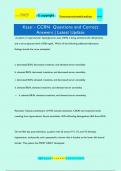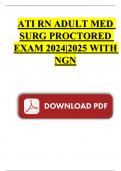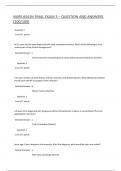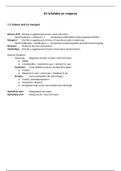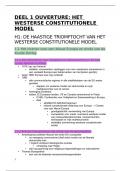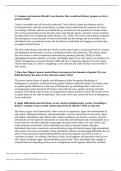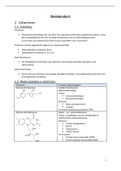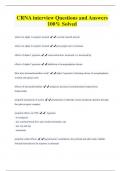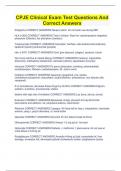Exam (elaborations)
Kassi - CCRN Questions and Correct Answers | Latest Updat
- Course
- Institution
A patient in hyperosmolar hyperglycemic state (HHS) is being admitted with dehydration and a serum glucose level of 836 mg/dL. Which of the following additional laboratory findings should the nurse anticipate? a. decreased BUN, decreased creatinine, and elevated serum osmolality b. elevated ...
[Show more]
